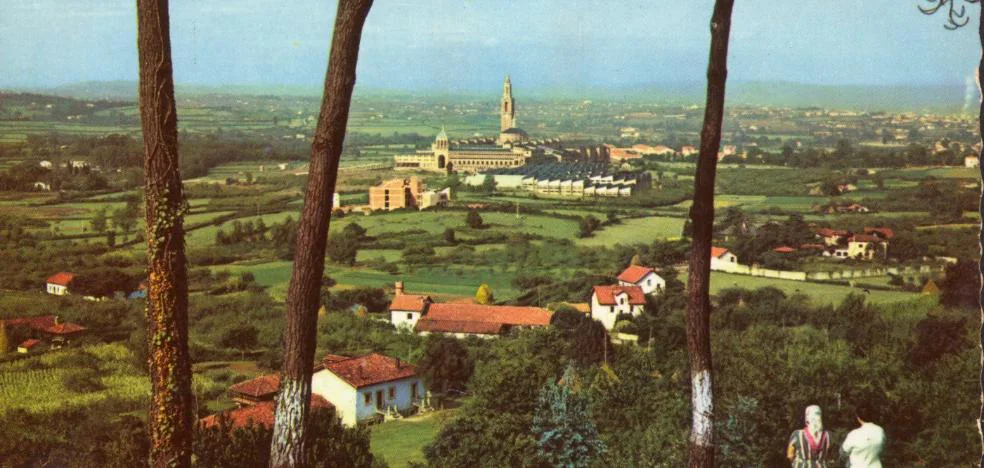It has cost him. It hurts a little to get rid of all that that makes up the story of one’s own life and those of those who accompanied us. But Isabel Moro, daughter of José Avelino Moro Fernández (Infiesto, 1928- Gijón, 1977), has a certainty: “There is no better place to keep all my father’s material and to honor him than the Museum of the People of Asturias.” So his photographic archive, a magnificent collection of old postcards and other valuable materials belonging to his family, such as a bust of his father by the sculptor Francisco González Macías in 1972, is already in the possession of the cultural facility; a portrait of his sister Marta dressed as Asturian painted by Antonio Mendibil in 1969 and a wide collection of children’s stories and religious prints.
Moro was, along with Luis Adaro and Luis Argüelles, one of the promoters of the Muséu del Pueblu d’Asturies, founded in 1968. For his training he traveled throughout the Asturian geography, aboard a Volkswagen collecting all kinds of ethnographic pieces, utensils and materials. “My father did so much for the museum, they were ten years collecting all kinds of materials, taking it out of the towns with more enthusiasm than media and at a time when this was considered villageism”, assures Isabel Moro, today a contributor to this newspaper. which was the medium that gave birth to that ethnographic battle of José Avelino. “Through the newspaper it gave visibility and encouraged readers to make donations,” recalls Isabel Moro, who recounts her work as a journalist at EL COMERCIO. A selection of his customs texts were brought together in two books: ‘Fifteen stories of Tadeo’ (1969) and ‘Fifteen stories of Balba’ (1970).
Those were the founding years of a museum that was created by the hand of Luis Argüelles, José Avelino Moro, Rafael Meré, Marola, Manuel Encinas, Luis Aurelio Álvarez, Florina Alías, Belarmino Prada and Isidoro Cortina, among others. From his hand and enthusiasm, activities such as bowling games, country tours, pilgrimages, masses, ceramic exhibitions, artisan demonstrations, photography contests, bagpipe and tune recitals were launched … But José Avelino did not have the opportunity to see grow that space that since 2013 reminds you along with its promoters by means of a plaque. He died much earlier, in 1977, and that same year a beautiful citizen tribute was paid to him.
A year ago, Marta, Isabel’s sister, passed away, and the idea of donating her legacy began to haunt her. He searched, found and little by little he was carrying material. And there are still some pending deliveries, such as a collection of board games and more stories by Calleja.
A total of 1,245 photographs make up the photographic archive already donated, which clearly reveals the interests of his father, who is passionate about everything Asturian and Gijon. Many of these images are postcards that José Avelino Moro, together with his wife and daughters, collected over time and collected in various albums. “For more than 40 years we have been making this collection of old postcards, which were bought little by little and some of them were very expensive”, says Isabel Moro.
From the museum they report that the topics and dates are as varied as the history of the postcards. The typologies are multiple: from black and white and illuminated collotypes, from the first decades of the last century, in gravure, wonderful photographic postcards from the middle of the century, to those printed with the garish colorism of the seventies. They cover all of Asturias, although most are from Gijón, with a predominance of what is assumed: landscaping, urban views, monuments, parks, promenades, ports, beaches, … There are also numerous postcards from Covadonga, Luanco, Luarca , Candás and Perlora. This gift will serve to enrich the remarkable collection of postcards of Asturias, over six thousand, housed in the Muséu del Pueblu d’Asturies, from various origins and made by photographers and publishers both Asturian and foreign, such as O. Bellmunt , Hauser and Menet, Guillaume, Vinck, Librería Escolar, Thomas, Roisin, Arribas, Alarde and Artigot.
The donation also includes other paper copies, especially a series dedicated to the granary in its various types, and another set of studio portraits made by some of the most representative photographers of Asturias in the first half of the 20th century, such as the Electro Photographic Society , Marquerie, Foto Film, Mars, Julio Peinado, Duarte, Espiau, Pire, Ibarra or Vinalba.
All of this is in a safe place. Meanwhile Isabel is clear about what she will do: «I’m going to keep searching. He would be overjoyed. And I am amazed at how well things are preserved in the museum.
– .


